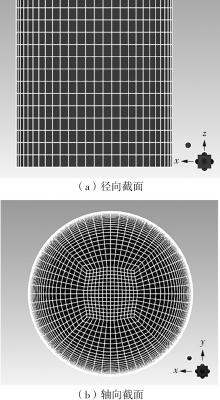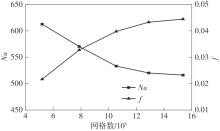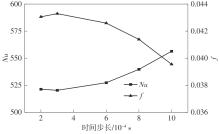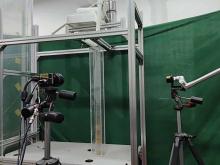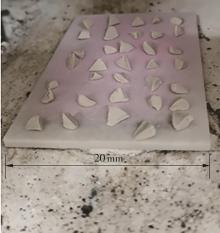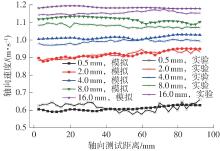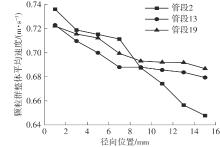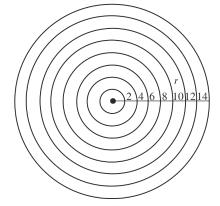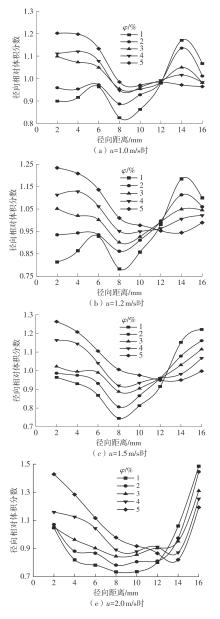| 1 |
孙丽,张楠,刘新华,等 .边界条件对颗粒-流体对流传热的影响[J].过程工程学报,2019,19(6):1075-1084.
|
|
SUN Li, ZHANG Nan, LIU Xinhua,et al .Effect of boundary conditions on particle-fluid convection heat transfer[J].The Chinese Journal of Process Engineering,2019,19(6):1075-1084.
|
| 2 |
QI G, JIANG F, CHEN F .Numerical investigation on heat transfer of liquid-solid two-phase flow in vertical multi-tube circulating fluidized bed heat exchanger[J].Powder Technology,2023,427:118752/1-16.
|
| 3 |
EHSANI M, MOVAHEDIRAD S, SHAHHOSSEINI S .The effect of particle properties on the heat transfer cha-racteristics of a liquid-solid fluidized bed heat exchanger[J].International Journal of Thermal Sciences,2016,102:111-121.
|
| 4 |
JIANG F, WANG H, LIU Y,et al .Effect of particle collision behavior on heat transfer performance in a down-flow circulating fluidized bed evaporator[J].Powder Technology,2020,381:55-67.
|
| 5 |
STRÖM H, SASIC S .Detailed simulations of the effect of particle deformation and particle-fluid heat transfer on particle-particle interactions in liquids[J].Procedia Engineering,2015,102:1563-1572.
|
| 6 |
MELLER Y, LIBERZON A .Particle-fluid interaction forces as the source of acceleration PDF invariance in particle size[J].International Journal of Multiphase Flow,2015,76:22-31.
|
| 7 |
JIANG F, YAN S, QI G,et al .Particle distribution and pressure drop in a horizontal two-pass liquid-solid circulating fluidized bed heat exchanger[J].Powder Technology,2023,416:118210/1-16.
|
| 8 |
SHOKRI R, GHAEMI S, NOBES D S,et al .Investigation of particle-laden turbulent pipe flow at high-Reynolds-number using particle image/tracking velocimetry (PIV/PTV)[J].International Journal of Multiphase Flow,2017,89:136-149.
|
| 9 |
HAO M, ZHANG Y, HUANG Y,et al .Effect of particle self-rotation on separation efficiency in mini-hydrocyclones[J].Powder Technology,2022,399:117165/1-11.
|
| 10 |
SUN J, GAO T, FAN Y,et al .The modulation of particles on coherent structure of turbulent boundary layer in dilute liquid-solid two-phase flow with PIV[J].Powder Technology,2019,344:883-896.
|
| 11 |
AKSHAYVEER, SHINDE V M .CFD-DEM analysis of particle polydispersity on the performance of fluidised bed reactor during silane pyrolysis[J].Particuology,2024,91:72-87.
|
| 12 |
ZHANG H, WANG Y, LI C,et al .Pulsation effects on mixing behaviour of binary particles with different densities in supercritical water fluidized bed reactors: a CFD-DEM study[J].Powder Technology,2024,433:119259/1-14.
|
| 13 |
LV K, MIN F, ZHU J,et al .Experiments and CFD-DEM simulations of fine kaolinite particle sedimentation dynamic characteristics in a water environment[J].Powder Technology,2020,382:60-69.
|
| 14 |
XU B L, LIN Z, ZHU Z,et al .Experimental and simulation study of the effect of gravity on the solid-liquid two-phase flow and erosion of ball valve[J].Advanced Powder Technology,2022,33(2):103416/1-14.
|
| 15 |
LIU G, YU F, LU H,et al .CFD-DEM simulation of liquid-solid fluidized bed with dynamic restitution coefficient[J].Powder Technology,2016.304:186-197.
|
| 16 |
D’AVINO G .Numerical simulations on the settling dynamics of an ellipsoidal particle in a viscoelastic fluid[J].Journal of Non-Newtonian Fluid Mechanics,2022.310:104947/1-12.
|
| 17 |
HU R, LIU Y, RAVNIK J,et al .A hybrid analytical-numerical model for calculating the maximum elastic force acting on a flow-driven elastic prolate spheroidal particle during its collision with a rigid wall[J].Computational Mechanics,2022.Doi: 10.1007/s00466-021-02127-w.
|
| 18 |
LIU X, ZHOU J, GAO S,et al .Study on the impact wear characteristics of catalyst particles at 90 degrees elbow via CFD-DEM coupling method[J].Journal of Applied Fluid Mechanics,2022,15(1):221-230.
|
| 19 |
KRUGGEL-EMDEN H, RICKELT S, WIRTZ S,et al .A study on the validity of the multi-sphere discrete element method[J].Powder Technology,2008,188(2):153-165.
|
| 20 |
彭德其,冯源,王依然,等 .立式缩放管内液固颗粒群浓度分布与汇聚特性[J].化工进展,2022,41(9):4662-4672.
|
|
PENG Deqi, FENG Yuan, WANG Yiran,et al .Distribution characteristics and convergence of particles in converging-diverging tube[J].China Powder Science and Technology,2022,41(9):4662-4672.
|
| 21 |
GAN J, YU A, ZHOU Z .DEM simulation on the packing of fine ellipsoids[J].Chemical Engineering Science,2016,156(30):64-76.
|
| 22 |
GAN J, ZHOU Z, YU A .Structure analysis on the packing of ellipsoids under one-dimensional vibration and periodic boundary conditions[J].Powder Technology,2018,335(10):327-333.
|
| 23 |
LIU G, Wang P, WANG S,et al .Numerical simulation of flow behavior of liquid and particles in liquid-solid risers with multi scale interfacial drag method[J].Powder Technology,2013,24 (2):537-548.
|


